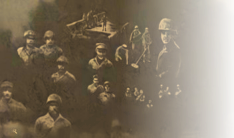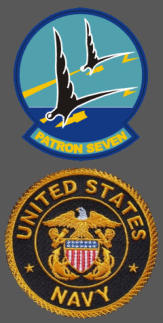
Wartime Heritage
ASSOCIATION
Name:
John Robert Staples
Rank:
Chief Aviation Machinist’s Mate (ADC),
Chief Petty Officer
Service Number:
3760546
Service:
Patrol Squadron Seven,
United States Navy
Awards:
Air Medal, Good Conduct Medal,
2 Presidential Unit Citations,
National Defense Service Medal
Date of Birth:
July 25, 1916
Place of Birth:
Belmont, Colchester County, Nova Scotia
Date of Enlistment:
May 9, 1940
Place of Enlistment:
San Francisco, California
Age at Enlistment:
23
Address at Enlistment:
Springfield, Hampden County, Massachusetts
Date of Death:
January 24, 1954
Age:
37
Cemetery:
Hillcrest Cemetery, Springfield, Hampden County, Massachusetts
John Robert Staples was the son John James Staples (1890–1950) and Ada Constance (Marshall) Staples
(1891–1975). His father was born in Belmont, Colchester Co., NS, like John and his mother was born in
Halifax, Nova Scotia.
John had eight siblings – Donald Richard Staples (1910–1968), Eva Grace Staples (1914–1914), James Herbert
Staples (1919–1920), Kenneth Marshall Staples (1922–2008), David Alexander Staples (1924–1996), Kathryn
Elizabeth Staples (1926–2010), Frederick Howard Staples (1928–2002), and Gladys Mary Staples (1932–2015).
John’s brother Kenneth served the United States in the Second World War with the US Army from 23 October
23, 1942, until January 6, 1946. Like John, his brother David served in both World War II and the Korean
War. He served in the US Navy from April 3, 1942 until January 5, 1946, and then from March 12, 1951, until
December 31, 1952. In 1942 he served on the USS US Grant (AP-29), a transport. The Grant was originally a
German ocean liner named König Wilhelm II seized by American in WWI, renamed USS Madawaska (ID-3011) in
1917, and then the USS Grant in 1922. In 1943, David also served on the USS General GO Squier (AP-130), the
lead ship of her class of transport ship.
John served in the Naval Air Service of the US Navy during WWII after enlisting pre-
war on April 19, 1940. He was already serving in the Pacific when the attack on
Pearl Harbor occurred and the United States entered the war in December 1941.
John married Frances Madge Wells (born 1924) on November 18, 1949, in Duval,
Florida.
John Staples served with the US Navy’s Patrol Squadron 7 (VP-7) in the Pacific. VP-
7 was transferred to USNS Iwakuni in Yamaguchi Prefecture, Japan, on June 28,
1953 for operations in support of United Nations action in Korea. VP-7 was called
upon to fly reconnaissance and screening missions in support of Task Force 77 in
the Korean War.
Chief Aviation Machinist's Mate Staples was the plane captain of a P2V-5 Neptune
patrol bomber, aircraft HE 10 (serial number 124874), with Patrol Squadron 7,
based at Naval Air Station Barbers Point, in O'ahu, Hawaii.
On January 22, 1954, as the plane was making a landing approach it crashed into the southeast slope of
Mount Puu Kaua in O’ahu, killing 7 crewmen. The other six crew were as follows:
Aviation Machinist’s Mate (AD2), Petty Officer 2nd Class
AD2 Joseph Daniel Beczek
Aviation Electronics Technician (AT3), Petty Officer 3rd Class
Richard Newton Brown
Ensign Wilbur Duvall Cooper
Lieutenant Junior Grade Walter J Hanzo
Ensign Gerald Martin Hazlett
Aviation Structural Mechanic (AM2), Petty Officer 2nd Class
Paul Martin Koehler
Aviation Electronics Technician (AT2), Petty Officer 2nd Class
Michael Joseph Maksymon
Although the Korean War officially ended July 27, 1953, with the signing of the Armistice, John Robert
Staples and the other crew of the flight could be considered some of the last Korean War casualties.
“Navy aircraft fought in the Korean War and Navy Patrol Squadron (VP) aircraft shared in the action. In the
Korea area of operations, VP squadrons participated in the blockade of North Korea, keeping merchant
shipping and fishing fleets under surveillance and deterring hostel submarine activity. Patrol aircraft
contributed to mine hunting and laying as well as dropping flares for air strikes. They also conducted
weather reconnaissance and search and rescue operations. Patrol Squadron Seven (VP-7) arrived in June
1953 from NAS Quonset Point, Rhode Island less than one month before the armistice on July 27, 1953. It
was the only squadron from the Atlantic Fleet to deploy to the Korean War zone. The squadron was
equipped with P2V-5 Neptune patrol aircraft and was based out of NAS (Naval Air Station) Iwakuni in
Yamaguchi Prefecture, Japan. During the deployment the squadron patrolled the Sea of Japan and the
Yellow Sea. The squadron departed the Western Pacific in January 1954. The last aircraft to depart was
tail code HE 10, serial number 124874. In the Navy, aircraft serial numbers are known as Bureau Numbers
or ByNos. ByNo 124874 was configured for mine laying and was the "Hanger Queen" during the deployment,
meaning that it was used for parts and that it spent much of its time parked in the hanger. On January 21,
1954, the eight-man crew of "HE 10" made a missed approach trying to land at NAS Barbers Point, O’ahu,
Hawaii on its way home after the war. The aircraft turned left into the center of the island, rather than
turn right out over the ocean. The aircraft impacted the Waianae Mountain range at approximately 9:30
PM. You could consider these men to be some of the last casualties of the Korean War.
The sad remnants of the VP-7 P2V-5 Neptune still lie in the Waianae Mountain range on O’ahu. The aircraft
rests on a steep, thirty-degree slope. A broken tree stands testament to the tremendous impact forces.
Many small trees have grown up around and into the site. Countless twisted and mangled pieces of metal
are scattered around the site. The remains of the crew along with the guns and some of the electronics
have long since been removed. The tail section including the tail gun turret is the largest piece of wreckage.
The BuNo under the left tail plane is in perfect shape, almost like it was painted yesterday. Evidence of the
traumatic crash and fire can be seen on the fuselage and various parts. A left wing section still bears the
insignia of a white star on one side and the letters NA for NAVY on the other. One of the 3700 hp Wright
Cyclone R 3350-30W engines is located next to the fuselage and the other is further down the slope next to
a tree. It is believed that a large amount of wreckage was either lost to the crash fire or buried in the
ground. No excavation at the site is permitted. Many of these people have been forgotten and the history
lost, however these men are now remembered. The crash of this P2V-5 Neptune aircraft is an important
legacy of the Korean War. Don't forget those who served and sacrificed in the Forgotten War.”
- Legacy of the Korean War in Hawaii by Dave Trojan

copyright © Wartime Heritage Association
Website hosting courtesy of Register.com - a web.com company

Remembering the Korean War
Korean War Casualties with a Nova Scotia Connection





- World War I - Menu
- WWI Stories and Articles
- Photos - Yarmouth Soldiers
- Selection of World War I Songs
- WWI Casualties of Yarmouth, NS
- Those Who Served - Yarmouth, NS
- WWI Casualties Digby Co. NS
- WWI Casualties Shelburne Co. NS
- Merchant Mariners (1915) Yarmouth, NS
- Canadian Forestry Corps - Non Yarmouth Birth/Residence Enlistments
- US Draft Registry - Yarmouth NS Born


- World War II - Menu
- WWII Stories and Articles
- Telegraphist Air Gunners
- WWII Casualties of Nova Scotia
- US Casualties with NS Connection
- Far East/Pacific Casualties with NS Connection
- Merchant Navy Casualties Nova Scotia
- Nova Scotia WWII Casualties Holten Canadian War Cemetery
- D-Day Casualties - Nova Scotia
- CANLOAN Program Casualties - Nova Scotia
- Battle of the Bulge Casualties - Nova Scotia
- WWII Casualties Yarmouth NS
- Yarmouth Casualties - RCAF RAF Canadian Army WWII
- Yarmouth Co., Marriages WWII
- Casualties Non-Born/Residents with Connection to Yarmouth Co., Nova Scotia.
- WWII Casualties Digby Co., NS
- Non-Nova Scotian WWII Casualties Buried in Nova Scotia
- WWII RCAF Casualties Aged 16-18
- Brothers/Sisters Who Served - World War II













